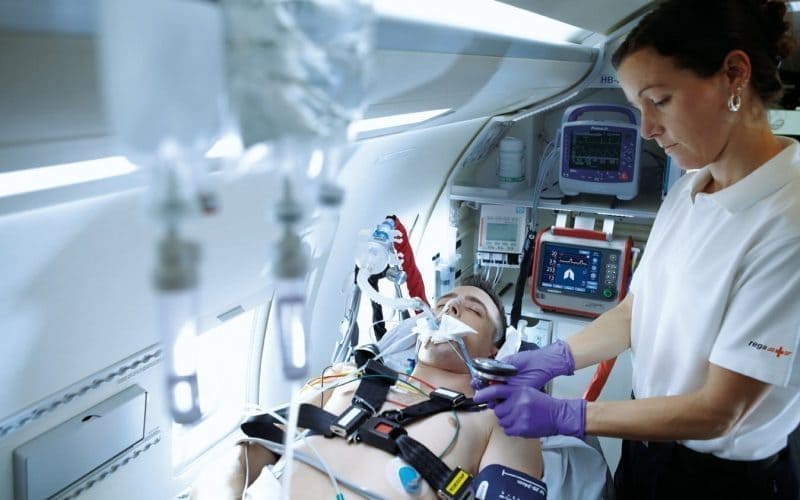A ventilator ambulance is an ambulance with portable ventilators and a life support system. Ventilators are used in operating rooms, emergency departments, critical care transport units, and air medical transports.
There are three types of Ambulances
Advanced cardiac life support
Advanced Cardiac Life Support Ambulances (ACLS) are the enhanced version of regular ambulances. The ACLS ambulance services offer extensive services to those clients who are diagnosed with cardiac problems and to those who require care, such as adequate blood circulation and ventilation, during the shifting.
Advanced life support
In advanced life support ambulances, there will be heart and blood pressure monitoring equipment, pulse oximetry, IV pumps, oxygen delivery devices, airway, etc.
Basic life support
The BLS ambulances of Ambulance on Call are designed in such a way that it provides enhanced medical assistance to their clients during transportation. It provides sufficient oxygen, blood transfusions and other medication that helps the patient to be in a stabilized condition till reaching the hospital.
Ziqitza Health Care operates the ALS and BLS ambulances for various purposes under their 108, 102 and 1298 helpline numbers.
The Current Scenario
Despite having state-of-the-art life support systems and devices, a considerable number of deaths occur during the transfer of patients to hospitals. One of the reasons is the paucity of trained medical professionals or doctors to accompany the vans that ferry patients requiring urgent life support, owing to steep costs and logistic issues.
Another grave cause of concern is the cost of these modern and fully furnished ventilator ambulances. Most of them prove to be expensive for the common man, and even when the cost differential isn’t very steep, people still seem to prefer basic vans that are devoid of essential medical equipment. They are unaware of the high risk that critical patients face and this causes deterioration in the patient’s health. A common example is dengue patients who severely suffer due to a pause in the provision of life support.
Though neighbourhood vans may arrive quicker, their equipment deficiency poses a big threat to patient safety and may be more hazardous to their lives compared to the late arrival of the ACLS, ALS or BLS vehicles. That is why ZHL recommends availing the appropriate transport according to the emergency and offers multiple ambulance services.
Possible Remedies
Most advanced patient transport vehicles use portable mechanical ventilators, while BLS vehicles use bag-valve masks. Delivering BVM ventilation appropriately is an arduous task that requires thorough practice, and patients undergoing them may be susceptible to harmful complications. Using a mechanical ventilator, especially an automatic transport ventilator, is more beneficial as it allows for the control of the ventilation rate, volume, oxygen concentration, and pressure, while also monitoring the oxygen and carbon dioxide levels.
This poses a dire need in India for a cheaper and more portable ventilator. If the cost of this equipment reduces, there is a possibility of a reduction in ambulance charges, and of the introduction of these ventilators in BLS vehicles. Adopting automatic transport ventilators that seamlessly fit into the vehicle also reassures patient safety since their usage is more simplified, and there is evidence that paramedics are able to focus on other aspects of patient care than be occupied with manual ventilation.
Affordability is a major concern for most patients and their families, and this forces them to opt for below-par medical services. With advancements in technology and successful innovations in creating medical equipment that is compact, user-friendly and reasonably priced, most of these concerns regarding the pre-hospital environment treatment and their efficiency would be resolved.
Benefits of Ventilator ambulance service
Quick response times – In an emergency, when every second counts EMS transport ventilator will help to handle the emergency smoothly and timely.
Life-saver – These ventilator ambulances are well equipped with all necessary life-saving equipment such as defibrillators and ventilators.
Trained staff – skilled staff who knows how to use life-saving tools on board. They also trained with basic first-aid treatments and training like CPR to save lives.
Conclusion
Ventilator ambulance service is also known as EMS transport ventilator. It is a very efficient and well-invented service in the emergency field. Such services can save lives. Ziqitza Healthcare provides advanced emergency services with ventilator and air ambulance service.



